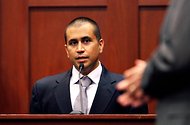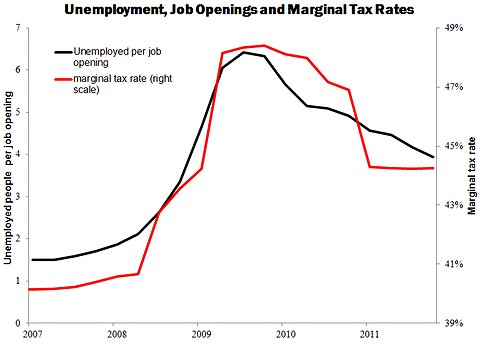 Gary W. Green/Reuters George Zimmerman, shown at a hearing in April, is charged with second-degree murder in the death of Trayvon Martin, 17.
Gary W. Green/Reuters George Zimmerman, shown at a hearing in April, is charged with second-degree murder in the death of Trayvon Martin, 17.
5:51 p.m. | Updated George Zimmerman, accused of second-degree murder in the shooting of Trayvon Martin earlier this year, filed suit against NBCUniversal on Thursday, alleging that news reports that edited his voice on a 911 tape constituted defamation and intentional infliction of emotional distress.
The suit, filed in circuit court in Seminole County, Fla., asked for a jury trial. A spokeswoman for NBCUniversal said in response to the suit: “We strongly disagree with the accusations made in the complaint. There was no intent to portray Mr. Zimmerman unfairly. We intend to vigorously defend our position in court.”
The edits of a 911 audio recording — which removed an intervening question from the operator directly asking Mr. Zimmerman what race Mr. Martin was — aired three times on NBC’s “Today” show: first on March 20, in a report by Lilia Luciano; on March 22, in another report by Ms. Luciano; and again on March 27, in a report by Ron Allen. The killing of Mr. Martin, on the night of Feb. 26 in Sanford, Fla., spurred a national debate about self-defense, crime and race.
In Ms. Luciano’s first report, Mr. Zimmerman’s words to the 911 operator were: “This guy looks like he’s up to no good or he’s on drugs or something. He looks black.” In fact, Mr. Zimmerman told the operator: “This guy looks like he’s up to no good or he’s on drugs or something. It’s raining and he’s just walking around, looking about.” When the dispatcher said, “O.K., and this guy — is he white, black or Hispanic?” Mr. Zimmerman then said, “He looks black.”
The suit charges that journalists at NBC News intentionally edited Mr. Zimmerman’s statements to make him appear to be a “racist, predatory villain.”
When the omissions were noticed at the end of March, NBC News conducted an investigation and concluded that the edits were mistakes, not deliberate distortions. Ms. Luciano subsequently left the network, as did a producer who worked with her. Mr. Allen remains at the network.
Ms. Luciano and Mr. Allen were named as defendants in the lawsuit along with NBC on Thursday. The producer, whose name has not been revealed in news reports, was not named as a defendant.
Mr. Zimmerman faces second-degree murder charges in the shooting of Mr. Martin, who was 17. His criminal trial is scheduled to begin in June.
A version of this article appeared in print on 12/07/2012, on page A18 of the NewYork edition with the headline: Zimmerman Sues NBC Over Editing Of 911 Tapes.
Article source: http://mediadecoder.blogs.nytimes.com/2012/12/06/man-charged-in-trayvon-martins-death-sues-nbc-for-defamation/?partner=rss&emc=rss

